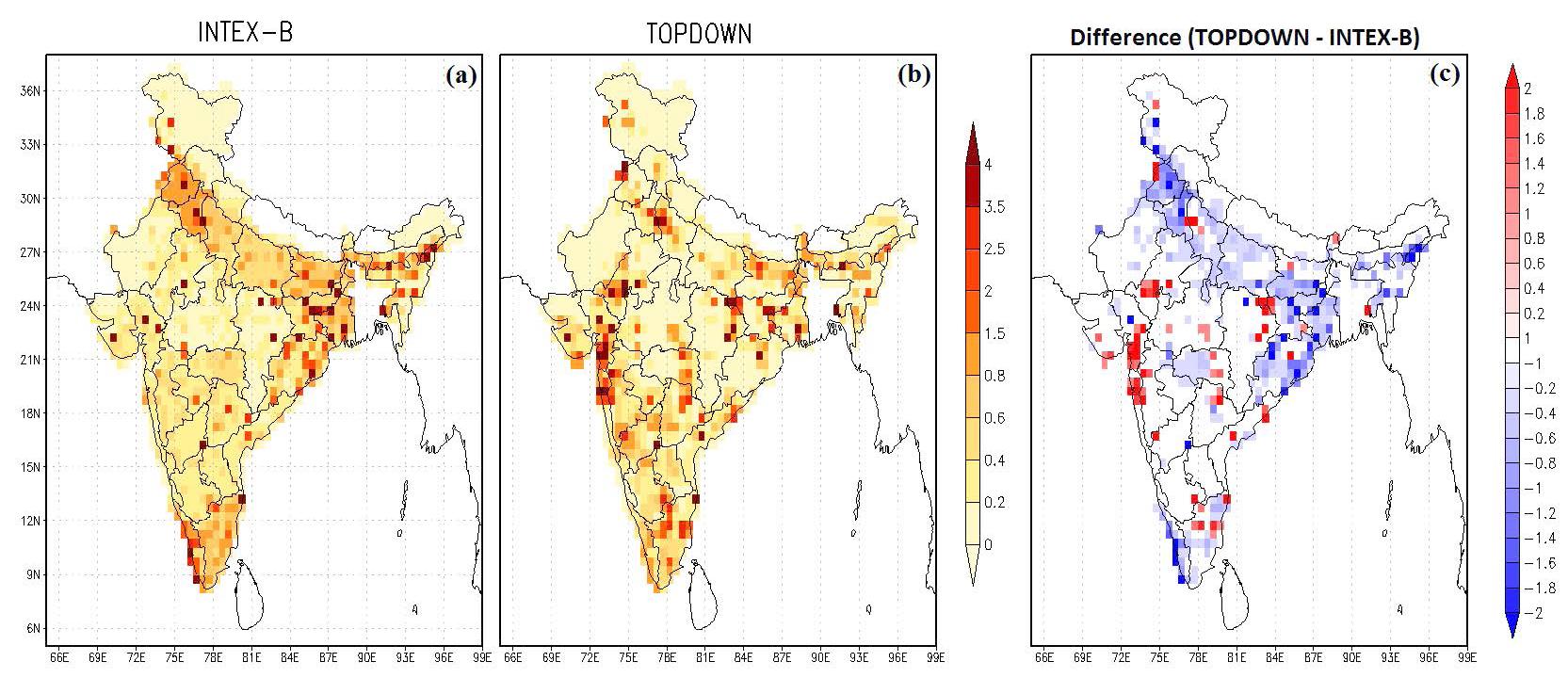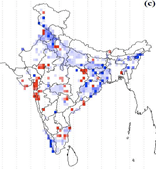Satellite constraints of Nitrogen Oxide (NOx) emissions from India based on OMI observations and WRF-Chem simulations
Accurate NOx emissions are essential for air pollution quantification and mitigation. Combustion processes in the transportation, industrial, and residential sector and emissions from power plants are the dominant anthropogenic sources of NOx. In addition to contributing to the formation of ground-level ozone and fine particle pollution, high levels of NOx are linked with a number of adverse effects on the respiratory system.
A recent study, led by Sachin Ghude, a visiting Scientist with the ACRESP group in 2011/2012, for the first time developed an independent satellite constrained NOx emission inventory for India for 2005 using an inverse technique and iterative procedure. The study combined OMI tropospheric NO2 column retrievals over the Indian region with tropospheric NO2 columns simulated by the WRF-Chem model using the INTEX-B emission inventory. By determining the local relationship between modeled emissions and tropospheric columns and iteratively applying this relationship to OMI observations, an optimized NOx emission inventory was derived on a 0.5°x0.5° grid. The overall total NOx emissions derived for India for 2005 amount to 1.9 TgN y-1, comparable with the estimate of 2.4 TgN y-1 in EDGARv4.1 and 2.1 TgN y-1 (for 2006) in the INTEX-B inventories. Locally and regionally differences, however, can be high. The top-down inventory captures many of the missing hotspots in the original inventory and suggests that the INTEX-B inventory overestimates emissions over the Western and Eastern Indo-Gangetic region and underestimates point sources. Evaluating the effect of the top-down inventory on surface ozone clearly indicates significant changes in the spatial distribution. This study demonstrates the role of satellite retrievals in improving regional emission inventories, specifically over regions where bottom-up approaches have large uncertainties, and the related benefit of better understanding air quality.
These results may have important policy implications for urban/industrial areas in India where NOx emissions are already high and expected to increase in the future with impending demands of energy. While there are still remaining uncertainties in the top-down estimate, this method provides a potential basis for mapping and evaluating robust independent NOx emissions and trends, particularly for regions with large uncertainties such as India, and provides important information to air quality modelers and policy makers. This inventory data set is currently available online and users can download this data set in the text format from the website http://www.tropmet.res.in/emission/.

References:
Ghude, S. D., G. G. Pfister, C. K. Jena, R. J. van der A, L. K. Emmons, and R. Kumar (2012), Satellite constraints of Nitrogen Oxide (NOX) emissions from India based on OMI observations and WRF-Chem simulations, Geophys. Res. Lett., doi:10.1029/2012GL053926, in press.
